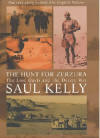
This is a study of the true story behind
"The English Patient", one of the least known and most extraordinary episodes of
World War II. In the 1930s, the Zerzura Club (named after a lost oasis in the
Libyan desert) met once a year for dinner at the Cafe Royal in London.
Ostensibly, its members were cosmopolitan adventurers indulging a craze for
desert travel by motor car and aeroplane, and searching for the lost oases and
ancient cities of a vanished civilization. In reality they were mapping the
desert for military reasons, marking vital wells and checking terrain.
The Club's
members were drawn from countries that would soon be enemies, and fellowship
masked a vicious rivalry. Mussolini hoped to make Egypt the centrepiece of a new
Italian empire, but the British - for whom the Suez Canal was strategically
vital, were determined to hold onto that country.
When war
broke out in 1939, Ralph Bagnold founded the Long Range Desert Group to spy on
and disrupt the Axis powers' advance on Cairo under Rommel, while his fellow
club member Count Almasy tried to spirit the Egyptian Chief of Staff out of
Cairo, and succeeded in inserting German spies. Both of them were using
knowledge and desert craft drawn from the hazardous hunt for the Zerzura Oasis,
where each had deceived the other about his true purpose. In telling this story,
Saul Kelly draws on interviews with surviviors as well as previously unknown
documentary material in Britain, Italy, Germany, Hungary and Egypt. His book
reads like a thriller by John Buchan or Frederick Forsyth - with one key
difference: it is true.
Page 1
Page 3 |